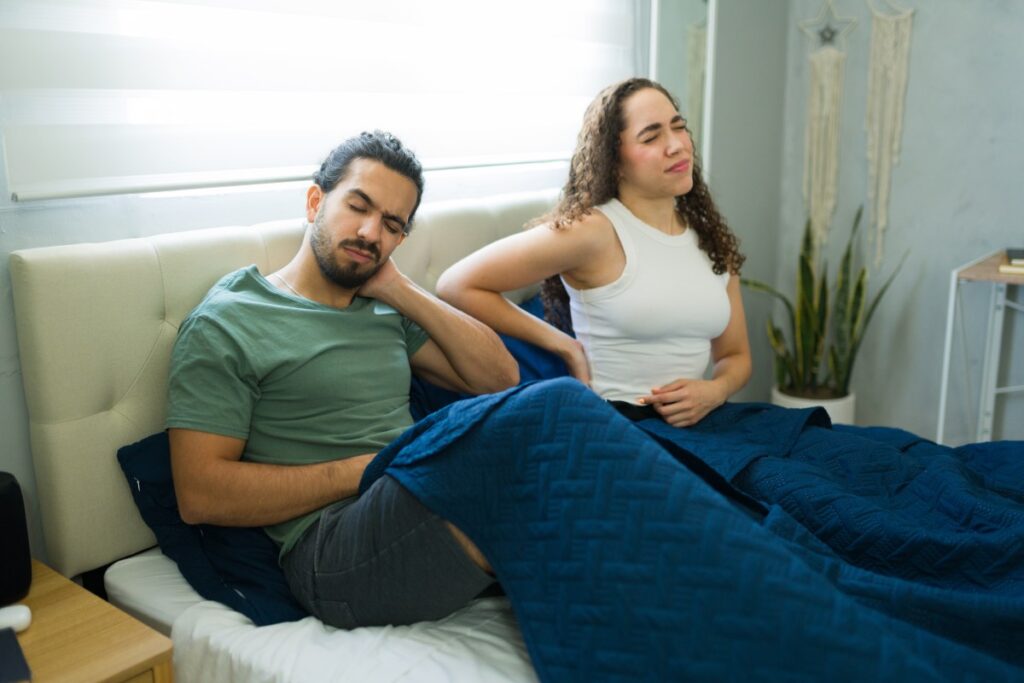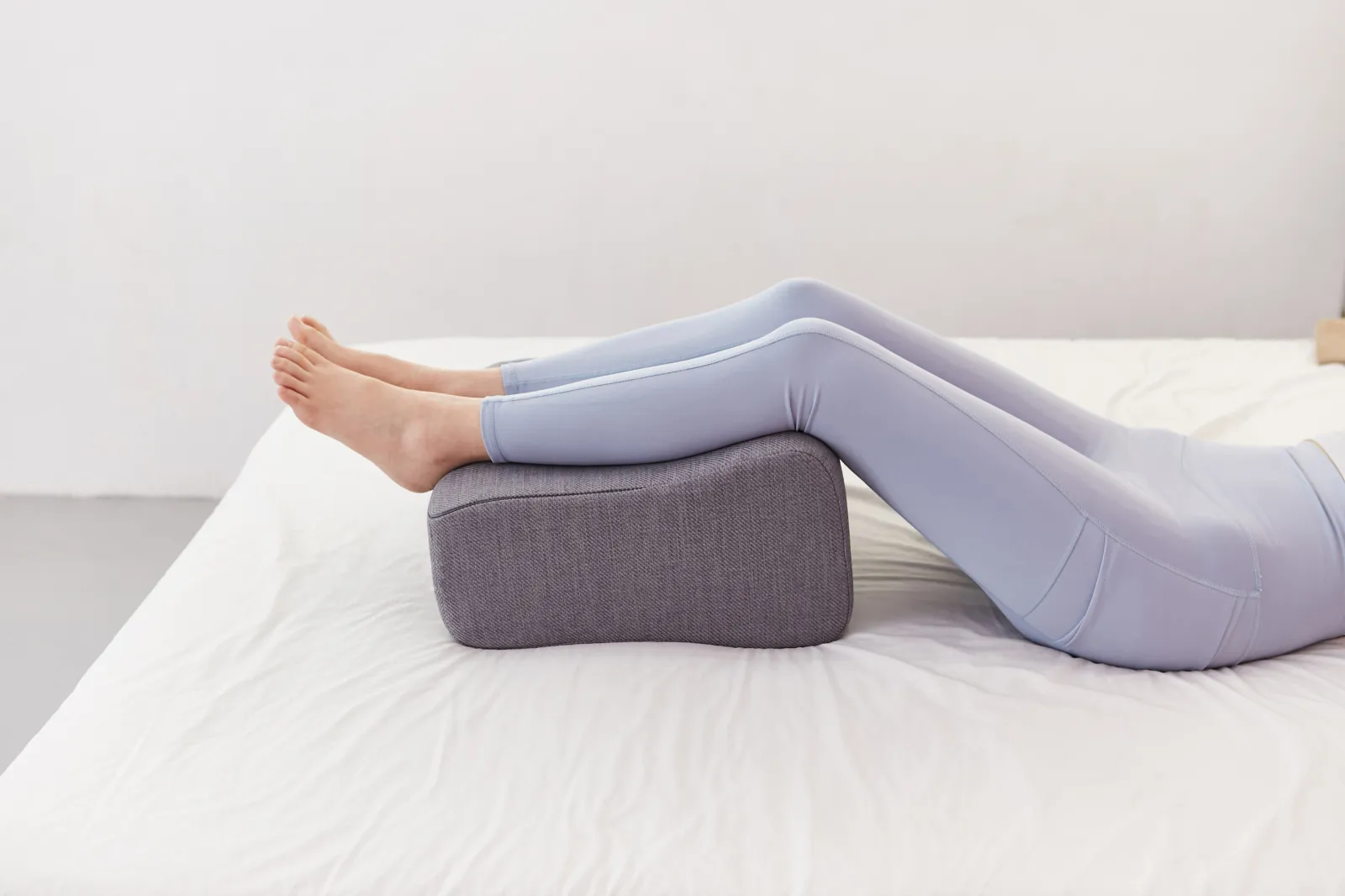We work all day and sleep all night—but how often do we stop to consider whether the way we sleep is helping or harming our bodies?
Spending long hours sitting down isn’t great for our health; it has been linked to obesity, cardiovascular issues and Type 2 diabetes. Research shows 80 percent of jobs in the U.S. are predominantly sedentary, and the average American spends half of their time awake at work.
With so many people glued to desks, car seats and screens, the toll on posture and the spine is becoming impossible to ignore. So what happens when the body finally lies down at night? And, more importantly, what is the best sleeping position for people who sit all day?
Chiropractor Dr. Jacob Lesher told Newsweek: “Sleeping on your back with your legs lightly elevated, or knees propped up, would be the best position.”
Lesher, based in Waconia, Minnesota, said that sleeping like this allows the spine to lengthen, while also reducing hip flexor tension that becomes tight and shortened from prolonged sitting.
Lesher added: “When we sit, our hips are flexed at 90 degrees, and this is now becoming the new neutral position for that hip. When we lie on our back, the hip is no longer flexed, and the hip flexors will pull on the spine.
“This is why having the legs propped up or slightly bent can decrease the pull through the lower back.”
How Prolonged Sitting Affects the Spine
Not only can sitting for too long lead to musculoskeletal issues, but studies have also found it may be bad for the brain and could potentially affect memory formation. Yet Americans aren’t too phased about slouching’s impact on health, according to a 2019 study conducted by Orlando Health, which found only 47 percent of respondents were concerned about poor posture.
Lesher, the national provider lead for LifeClinic, said: “Prolonged sitting can have a detrimental impact on the functional and structural health of the spine. Our body adapts to whatever position we show it we favor most. When we sit for extended periods of time, our body tries to make that its natural position.
“This would make standing and moving around or being physically active our ‘nonnormal’ state, which is bad for all our active people out there because now we are more prone to wear and tear, and eventual injury.”
Lesher continued: “Sleep can be a valuable time to help the body reset, along with functional and rehabilitation-based activity. If we sleep in an advantageous position, our bodies can relax and lengthen the tissues—muscles, fascia, joint spaces—to help regain some needed mobility.”
Expert Advice for Side Sleepers
Dr. Gbolahan Okubadejo, a spinal and orthopedic surgeon based in New York City, told Newsweek that sleeping in the recommended position can ease neck and shoulder tension after long hours at a computer.
For side sleepers, Okubadejo advised placing a pillow between the knees to help keep the hips and lower back aligned.
He said: “The head pillow should fill the space between the shoulder and head without tilting the neck up or down.
“Avoid curling too tightly into a fetal position, as this can strain the lower back.” Okubadejo added that stomach sleeping is a no-go as this can twist the neck and shoulders.
Okubadejo also recommended stretching before bed to help release tension built up from sitting all day. Waking up with less stiffness is easier when the spine is properly supported throughout the night.
How to Choose the Right Pillows and Mattress
Lesher said there is no one-size-fits-all approach to choosing pillows or mattresses, but there are a few reliable guidelines.
Pillows should support the head and neck while keeping the spine in a neutral position.
- Back sleepers typically benefit from pillows with a slight contour that follows the natural curve of the neck.
- Side sleepers usually need a thicker pillow that fills the space between the head and shoulder, helping keep the neck straight.
- For stomach sleepers—considered the least ideal position—a very thin pillow or no pillow at all is recommended.
Choosing a mattress is more complex, but specialists say that anything providing restorative sleep should take priority.
- For people with lower back problems, a firmer mattress is often best.
- Firmer surfaces reduce body contouring, which allows the spine to lengthen overnight.
- Elevating the legs, as previously discussed, can provide added relief.
Read the full article here

